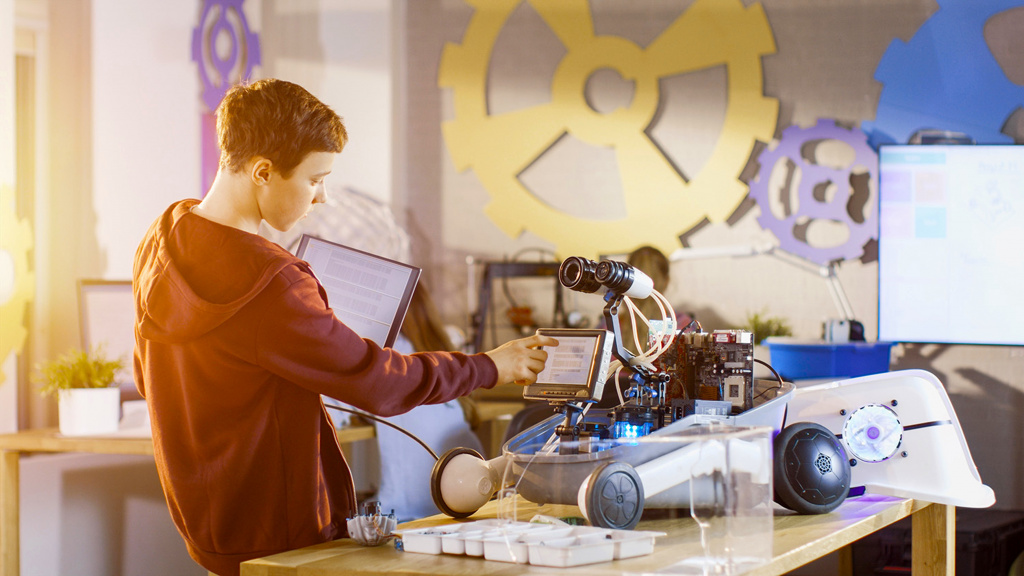
Back in 1739, Jacques de Vaucanson created and began exhibiting a new invention. Le Canard Digérateur or ‘The Digesting Duck’ was a machine made to imitate a real duck as closely as possible. Its wing alone was made of over 400 moving parts, and it could flap these wings, drink water, eat grain, and mimic the process of digestion all the way to the final event.
History is full of these kinds of inventions—to modern eyes they are strange but fascinating. They show the compulsion that people have had for hundreds of years to make, our need to create and invent. As David Orr says, ‘We all begin life with a will to leave a mark no one else has left’.1 We can see this in children from the earliest experiments with drawing and writing, to brick building and construction, through to teenage experiments with identity and fashion.
In recent years, the range of digital tools available to anyone to make has expanded enormously. While consumer devices such as tablets and laptops have become increasingly sealed and unrepairable boxes, a backlash against this has led to powerful technologies that young people can make with. Devices such as the ‘Makey Makey’ allow even young children to get started creating powerful electronics that interface with a computer. The simple circuits with batteries and bulbs have made way for customised controllers for computer games. Low cost hardware devices, such as the Raspberry Pi computer and BBC micro:bit have allowed children to program their own hardware and create their own devices, with low barriers to entry programming languages such as Scratch, powering ideas both on screen and in the physical world.
Children and young people are using these technologies to make amazing things that address problems they and their communities face. Every year the Apps for Good awards showcases such projects. A stand out entry for me was a small group from Wick High School who created an app to help farmers in their community in Scotland to manage livestock information. These young people used their technology skills to create a product with real potential that serves a need for the people around them.
At the CoderDojo Coolest Projects event this year, I met children who were using their technology to make things they cared about. One group had set up a system to keep their house plants watered when they went on holiday using little more than a micro:bit and some small water pumps. Another pair of girls from Bulgaria had created a small robot that would follow them around to keep their possessions close by when they were playing in the local park. Others had created robots to carry heavy loads in the workplace, a system to help find missing persons in the background of photographs on social media and interactive stories to encourage girls to explore and challenge gender stereotypes.
There is a lot of discussion about the shortage of technology professionals, and the need for more young people to fill vacancies as professional programmers. It would be easy to think that learning computing and programming at school was just useful for people interested in this specialism. However, all of these projects show that programming and digital making skills can provide opportunities for young people to make solutions to problems in all sorts of areas of their lives.